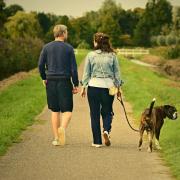Award-winning photographer David Chapman goes in search of that rarest of Cornish weather: snow

It isn’t often that we get snow in Cornwall but when we do have you ever noticed that when you take a photo the snow turns out grey or sometimes blue? Well let me tell you why and what you can do about it.
Cameras are increasingly sophisticated. Some can be controlled wirelessly, many contain global positioning software (GPS) most can even take a decent photograph but still they don’t recognise snow!
Snow should be white but the light meters in cameras expect scenes to contain a mixture of light and dark areas averaging out to a mid-tone. So the camera forces the image to be incorrectly exposed therefore making whites grey. The same problem arises at the other end of the spectrum, if you try photographing a black dog in a black room the photo will come out dark grey rather than black.
This problem is easily overcome. If you take a photo of a snow scene and the image comes out grey then you need to tell the camera to brighten the photo by using positive exposure compensation.

The problem of grey snow scenes is usually in part caused by dull light. If it is cloudy and quite dull, for instance before the sun has risen or when the sky is very grey, there is very little contrast so landscape photos often look a little flat’. It is best to wait for better light when the sun rises, so long as the snow hasn’t melted by that stage!
Now we start to get another problem. If we photograph snow scenes in the middle of a sunny day the snow reflects the colour of the sky making it look very blue. You can try changing the white balance setting on your camera to warm up the colours slightly, the cloud setting might do the trick, but this might make other features look too yellow.
The better solution to this problem is to wait until the sun is shining but is low in the sky. This type of light creates a mix of warm light and shade which better equates to the mid-tone desired by the camera. Rather than being a white formless mass the texture of the snow will be revealed by this low angle of light and all our problems are solved!
It’s a shame that snow usually falls on dull days, but when conditions are right it can be magical.


























